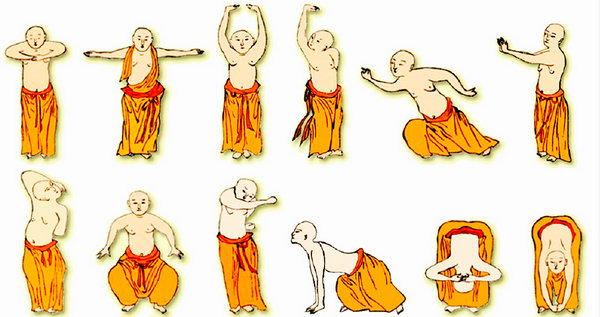
Muscle Tendon Changing Exercise
(Yi Jin Jing)
Yi Jin Jing exercises are widely thought to have been developed by the Buddhist Monk, Bodhidarmha, who was also the originator of the Shaolin martial arts tradition. The monks took up martial arts (Wushu) to limber up their bodies after long periods of sitting in meditation. Yi Jin Jing is rooted in traditional Chinese medicine Five Element theory. The movements form a continuous integrity, focusing on tendon stretching and bone flexing. Combining softness with strength, an essential element of the routines is natural breathing. This is assisted by calmness of the mind, to help the vital energy (Qi) flow as smoothly as possible.
“Muscles and tendons” actually includes some internal organs. Yi Jin Jing emphasizes symmetrical postures, a calm, meditative mind, and breathing in a harmonious manner. It is believed to balance Yin and Yang and to prolong life. Because of its ability to reduce pain, it is often used to treat osteoarthritis, skeletal muscle balance disorders, and other diseases, while it improves the cardiovascular system.
Yi Jin Jing Qigong uses combinations of movements to build strength and flexibility in your muscles and tendons. Posture is improved as well as flexibility of the practitioner’s core. Progressively stretching and releasing your muscles, tendons, and ligaments also stimulates inner energy flow. This improves your range of motion, resiliency, mobility and improves movement of bodily fluids (blood, lymph, and synovial fluid).
Yi Jin Jing is often used for healing as it helps injured muscles and tendons recover more quickly and improves the contraction function and coordination of skeletal muscle. It may also prevent diseases and painful or frozen joints.
